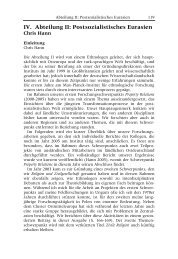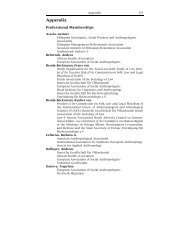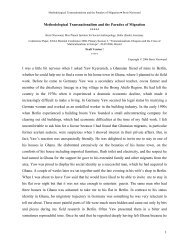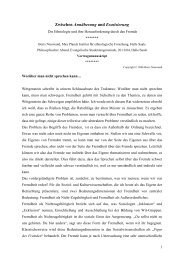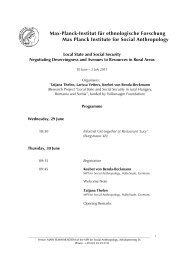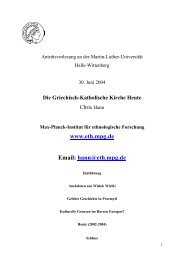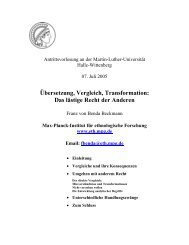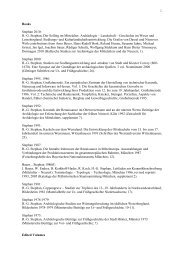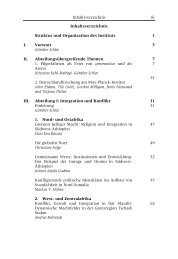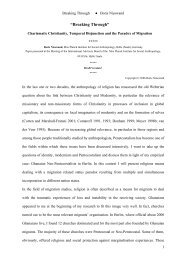Applying the Dhamma to contemporary society
Applying the Dhamma to contemporary society
Applying the Dhamma to contemporary society
Create successful ePaper yourself
Turn your PDF publications into a flip-book with our unique Google optimized e-Paper software.
lay people and some of <strong>the</strong> more conservative senior monks aired criticism and were pessimistic about<br />
<strong>the</strong> clergy’s involvement. Most senior figures of <strong>the</strong> Sangha were enthusiastic, but acknowledged that<br />
<strong>the</strong>y have a lack of experience in responding <strong>to</strong> HIV/AIDS. They felt that <strong>the</strong>y were not aware of all <strong>the</strong><br />
options this work could involve and lacked <strong>the</strong> organisational skills <strong>to</strong> carry out some of <strong>the</strong> proposed<br />
actions. In response <strong>to</strong> this, Unicef evaluated <strong>the</strong> achievements after <strong>the</strong> first year and <strong>the</strong>n suggested<br />
how <strong>the</strong> programme could be enhanced (Unicef, 2003a). Some of <strong>the</strong> points mentioned in <strong>the</strong> report<br />
are exemplary for working with a Sangha that has little experience with social activism and direct<br />
engagement. Monks initially focused on preaching and did not really establish contact with infected<br />
people. While younger monks were really enthusiastic, older monks and abbots sometimes showed little<br />
or no interest in <strong>the</strong> new activities. In many cases it was observed <strong>the</strong>re was no real understanding of<br />
how and why monks should get involved in social work (ibid). Reaching <strong>the</strong> target audience was also<br />
a problem. Most people attending temple festivals are over 50 years of age. To counter this development,<br />
<strong>the</strong> LBFO has set up an ‘Ordination Project’ that organises temporary one-week ordinations for boys<br />
and girls in <strong>the</strong> Vientiane area, combined with training in Buddhist values and ethics and including<br />
HIV- and drug-prevention.<br />
The age, experience and suitability of <strong>the</strong> Lao Sangha for this kind of work is ano<strong>the</strong>r important fac<strong>to</strong>r<br />
that limits its potential. The clergy is largely composed of novices and monks who leave <strong>the</strong> temple<br />
after completing <strong>the</strong>ir education. As a ‘religious boarding-school’ it gives a lot of young males from<br />
<strong>the</strong> countryside <strong>the</strong> chance <strong>to</strong> obtain a higher education - an opportunity <strong>the</strong>y would o<strong>the</strong>rwise not<br />
have. Monks stay an average of about four years in <strong>the</strong> Sangha. As a consequence, professional monks<br />
over 30 years old (about 5%-7% of <strong>the</strong> Sangha) have a long-term and administrative workload that<br />
is sometimes pressing. They have <strong>to</strong> fulfil <strong>the</strong> traditional ritual duties of monks <strong>to</strong>wards lay people,<br />
administer pagodas, and care for a large number of novices. The time left for exploring new fields and<br />
learning new methods is limited. It would be desirable <strong>to</strong> give training in social work and development<br />
<strong>to</strong> at least a few monks, who in turn could <strong>the</strong>n pass on that knowledge <strong>to</strong> o<strong>the</strong>r interested monks. The<br />
ethnic composition of Laos also has <strong>to</strong> be taken in<strong>to</strong> account: according <strong>to</strong> unofficial estimates about<br />
30-40% of <strong>the</strong> population are not Buddhist. Gender awareness is ano<strong>the</strong>r issue <strong>to</strong> be considered. Very<br />
few nuns are involved in <strong>the</strong> projects and it would be desirable <strong>to</strong> increase <strong>the</strong>ir number and <strong>the</strong>reby<br />
enhance gender awareness, as well as outreach capacity and <strong>the</strong> efficacy of <strong>the</strong> projects.<br />
Conclusion<br />
The involvement of Buddhist monks is certainly not a universal option that can be applied <strong>to</strong> all fields<br />
of <strong>the</strong> development sec<strong>to</strong>r. The Lao clergy’s involvement in <strong>the</strong> country’s development must be set in<br />
relation <strong>to</strong> <strong>the</strong> order’s social capital. Prevention, education and information campaigns are appropriate,<br />
while concrete areas of social work in relation <strong>to</strong> drug-abuse, ecology, <strong>the</strong> general health sec<strong>to</strong>r and<br />
24<br />
The Lao Sangha chronically lacks<br />
funds and training opportunities<br />
Juth Pakai Issue 7



